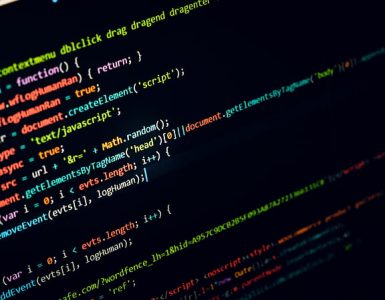Data science and machine learning are two of the most in-demand skills right now, whether in technology, healthcare, marketing, finance, or entertainment. In this blog, we will go through each domain, the skill sets required, how they are used in different industries, and how they complement each other.
Data science is a combination of mathematics, machine learning and computer algorithms that utilize different techniques and processes to collect, analyze, and extract meaningful insights. These results help stakeholders by providing them with data-driven decisions and making predictions.
Machine Learning (ML) is a branch of AI (artificial intelligence) that helps machines, or computers, to learn from the input data and constantly improve their accuracy over time. ML algorithms reduce the need of writing programs manually by enabling applications to use collected (historical) data and make predictions.
Whether you are a student or someone looking for a career change, this article will help you decide the career path that is most suited to your skills and interests.
What is a Data Scientist?
As a data scientist, your job involves collecting, analyzing and utilizing data to solve challenging business problems. You are expected to test and build complex algorithms by combining statistics, mathematics, computer science and machine learning, and draw effective insights from data.
Expected Skills
1. Programming Language
First and foremost, as a data scientist, one should be able to write complex algorithms. Programming languages like Python and R are the most popular choices for this.
Python is a widely used language in data science, data analysis and machine learning. Data professionals use several Python libraries including NumPy, Pandas, Matplotlib and Seaborn.
Another option for data scientists is R. It is an effective open-source data science library that offers several statistical techniques. Tidyverse is a popular library in R that helps with data collection, manipulation and visualization.
2. Statistics and Probability
As mentioned earlier, a major part of your job involves working with complex algorithms, which requires an in-depth understanding of statistical concepts and probability theory.
Data scientists are proficient in descriptive statistics including distribution of data, skewness and kurtosis, measures of central tendency (mean, mode, median), and measures of dispersion (range, variance, standard deviation).
This is useful for processes requiring exploratory data analysis.
3. Data Manipulation
Data manipulation is a process where the data collected is cleaned by making the data consistent, filtering rows and columns of a dataset, string and object data manipulation in a way that it is more usable, easy to access and organized.
Although data scientists spend about 60% to 70% of their time on data wrangling, data transformation and data manipulation processes, this in turn helps them to take data-driven decisions and extract deep insights from the data.
4. Data Visualization
Data scientists are also known as data wizards, who can turn numerical data into visually appealing charts. This process of using different graphs and charts to draw insightful conclusions that are easily understood by stakeholders is known as data visualization. Some popular data visualization libraries are:
- NumPy: Used to perform mathematical and statistical operations, mostly employed with arrays for processes like data transformation.
- Pandas: Used to transform datasets into a meaningful format using data analysis and data manipulation processes like ETL.
- Matplotlib: A toolkit for data visualization that offers options for a wide range of plots, including bar charts, scatterplots, pie charts, histograms, and so on.
- Seaborn: Built on top of Matplotlib, seaborn is a more sophisticated choice for statistical plotting in data visualization techniques.
5. Machine Learning
A data scientist is expected to have the foundational knowledge of machine learning algorithms since it helps them to develop complex models like decision trees, linear and logistic regression, building training and testing datasets, and make predictions of future data.
6. Cloud Computing
When you work with data, you have to frequently juggle between a variety of data sources, including internal and external data, organized and unstructured data, local databases, and cloud-based software. Therefore, being familiar with cloud computing technologies will make you stand out and enable you to play with big data stored on the cloud as well. Google Cloud Platform (GCP), Amazon Web Services (AWS), and Microsoft Azure are some of the well-known cloud-based services.
7. DBMS
To manage various data sources, a data scientist should be well proficient in handling relational and non-relational databases. DBMS (Database Management System) helps you collect, transform and retrieve large amounts of data using query procedures. MySQL, PostgreSQL, MS SQL Server, MongoDB, Redis and Oracle are some popular database management software.
Roles and Responsibilities
- Data collection from different sources like APIs and databases.
- Cleaning, manipulation and transformation of data to produce more insightful analysis.
- Work on projects collaboratively by communicating with data analysts, data engineers, and machine learning engineers.
- Perform EDA (Exploratory Data Analysis) to visualize various data parameters and identify key variables.
- Using advanced tools to plan effective data strategies.
- Develop and monitor data engineering pipelines to efficiently convert unstructured data into meaningful formats.
- One-person meetings with stakeholders to understand their needs and offer data-driven solutions that align with their objectives.
- Data modelling of complex datasets to generate predictive outcomes using advanced ml algorithms.
- Deploy and automate data pipelines into production to ensure the scalability, reliability, and security of models.
What is a Machine Learning Engineer?
As a Machine Learning Engineer or MLE, your primary goal is to build, design and automate predictive machine learning models.
An MLE develops algorithms that provide data-driven solutions to businesses and stakeholders. You will be administering the data pipelines, developing new models, improving existing ones, and deploying the models to production as well.
Expected Skills
1. Programming Language
To develop data models for ML algorithms, an MLE should be skilled in programming languages like Python along with libraries like PyTorch, sci-kit-learn, Tensorflow, and Keras.
To be able to choose the appropriate algorithm for a particular application, one should also possess a thorough understanding of data structures and algorithms.
2. Applied Mathematics
An MLE should be well-versed in advanced mathematics and statistics as it develops analytical and problem-solving skills since you are expected to construct complex algorithms. Deep learning models and applications that require implementing neural networks can both benefit from applied mathematics.
3. Feature Engineering
Feature engineering involves selecting key input features from the raw data that help in improving ML models. The better the input features selected, the better will be the model’s accuracy. These attributes are used in the machine learning process to draw feasible conclusions from the data.
4. ML Models and Algorithms
Machine learning engineers are proficient with different ML models and algorithms used to predict and forecast data by identifying trends. Some popular ML algorithms include linear and logistic regression, recommendation systems, Support Vector Machines (SVM), and decision trees.
5. Data Modeling and Evaluation
The structural representation of the dataset is established during data modelling. This involves finding correlations between variables, regression analysis, classification and clustering of variables. After data modelling is completed, the model is evaluated to assess its performance.
The dataset is split into training and testing sets, with the testing set evaluating the model’s performance while the testing set assesses the evaluation.
6. Model Deployment
An MLE should also be familiar with the model deployment process to put the ML models into production and make them accessible to stakeholders and users. Popular model deployment tools include Kubernetes, Docker and AWS Sagemaker.
7. Version Control
Machine learning projects are frequently modified, updated, and deployed to improve the accuracy and performance of a model. Knowing version control will enable you to manage and monitor the performance of ML models. As an MLE, you will regularly conduct code reviews and debugging of models to maintain code integrity.
8. Cloud Computing
Just like a data scientist, you will be working with many data sources. Cloud computing opens your doors to work with cloud data sources as well. It aids in the development of scalable, reliable, and cost-effective solutions to train ML models. Cloud sources accelerate deployment processes and enable collaboration with other teams.
Roles and Responsibilities
- Analyze large datasets to build ML models.
- Feature selection to initiate the machine learning process.
- Design and regularly update ML models to improve model performance.
- Develop scalable and cost-effective ML applications.
- Conduct regular code reviews and routine checks.
- Deploy ML models and applications to production for end users.
- Collaborate with data scientists and data engineers to build reliable business solutions according to stakeholder needs.
Major Differences: Data Scientist and ML Engineer
| Data Scientist | Machine Learning Engineer |
| Collect, extract and analyze raw data to draw data-driven decisions. | Develop, improve and deploy machine learning models to predict outcomes. |
| Expected to be skilled in mathematics, statistics, data transformation, data analysis and visualization, machine learning and database management. | Expected to be proficient with applied mathematics, in-depth knowledge of machine learning algorithms and version control. |
| Collaborates with data analysts, data engineers and stakeholders to identify trends and offers strategic solutions. | Collaborates with data scientists, software engineers and DevOps to deploy ML models and forecast data. |
| Aims to identify trends and patterns using historical data to solve business challenges. | Aims to integrate scalable machine learning applications and automate ML processes. |
Key Similarities: Data Scientist and ML Engineer
Both the machine learning engineer and data scientist share a lot in common in terms of their skills, roles, and responsibilities, as outlined below:
- They have business acumen and are capable of dealing with stakeholders, comprehending their needs, and offering them reliable, scalable solutions.
- Their key focus is to solve business problems.
- They generally have a knowledge and background in statistics and applied mathematics.
- They have a similar set of qualities in strategic thinking, leadership, analytical thinking and problem-solving abilities. They both love to solve new challenges every day.
- Both data scientists and ML engineers work with programming languages like Python and R.
- They can communicate actionable insights and key findings with end users using visualizations.
What is better: Data Scientist or ML Engineer?
Whether a data scientist or ML engineer is more valuable relies on several factors, including personal preferences, career focus, project requirements, and market scope.
ML may be an excellent career choice for you if you are someone with a solid understanding of data structures, algorithms, and statistics, and are fascinated by automation processes and maintaining machine learning models.
However, if you love challenges, have a business instinct, and are capable of communicating with stakeholders to provide them with data-driven solutions, data science can be a good fit for you.
In the end, the best course of action is to experiment and try your hands on both of these highly overlapping domains and pick the one you are most interested in.
Conclusion
Both data scientists and machine learning engineers are highly skilled professionals that thrive to utilize the raw data to address challenging issues and offer scalable solutions across different industries.
Whether in the field of technology, business, marketing, healthcare, science, education, finance, logistics or any other domain, the collaboration between data science and machine learning has made a substantial impact.
It would be more accurate to say that both data scientists and machine learning engineers complement each other in a project with their unique set of skills.






Add comment